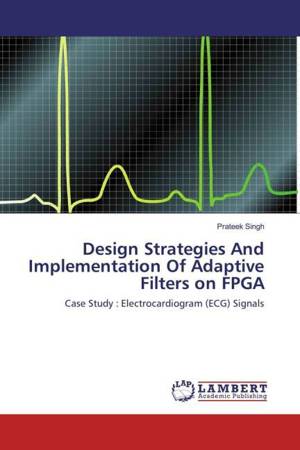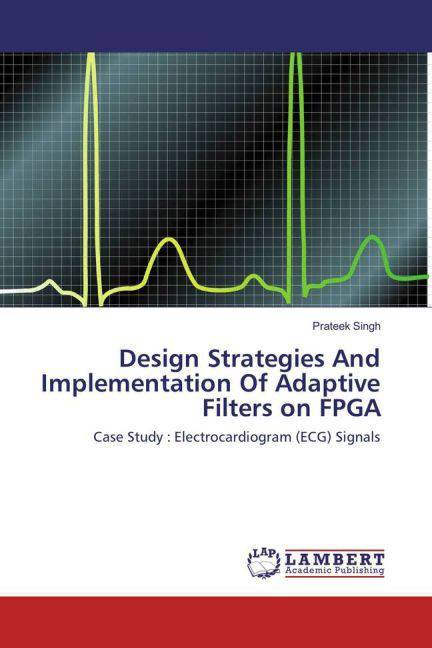
- Afhalen na 1 uur in een winkel met voorraad
- Gratis thuislevering in België vanaf € 30
- Ruim aanbod met 7 miljoen producten
- Afhalen na 1 uur in een winkel met voorraad
- Gratis thuislevering in België vanaf € 30
- Ruim aanbod met 7 miljoen producten
Zoeken
Design Strategies And Implementation Of Adaptive Filters on FPGA
Case Study : Electrocardiogram (ECG) Signals
Prateek Singh
Paperback | Engels
€ 35,45
+ 70 punten
Omschrijving
ECG is an electrical representation of blood pumping activity of the heart, which can be recorded easily with surface electrodes on the limbs or chest. We can filter high frequency and low frequency noises by implementing fixed filters, but motion artefacts and noises related to movement of muscles can not be filtered by fixed filters as we don't have any prior information regarding the nature of these noises and electromyogram (EMG) signals are superimposed on ECG signals because of physical proximity of the body movement. A static filter is required to remove all the noise frequencies, which could overly abase the attribute of the ECG since the heartbeat would also likely have frequency components in the rejected range. To outfox this latent loss of information, an adaptive filter is used. Thus adaptive technique allows a filter with a greater acceptance ambit, which means our filter provide output signal quality dead on target for medical diagnoses. The adaptive filter here is trained using LMS algorithm and RLS algorithm.The algorithms are enforced using Simulink as a reference model where the blocks are taken from the Xilinx block set.
Specificaties
Betrokkenen
- Auteur(s):
- Uitgeverij:
Inhoud
- Aantal bladzijden:
- 64
- Taal:
- Engels
Eigenschappen
- Productcode (EAN):
- 9783659915680
- Uitvoering:
- Paperback
- Afmetingen:
- 150 mm x 220 mm

Alleen bij Standaard Boekhandel
+ 70 punten op je klantenkaart van Standaard Boekhandel
Beoordelingen
We publiceren alleen reviews die voldoen aan de voorwaarden voor reviews. Bekijk onze voorwaarden voor reviews.











